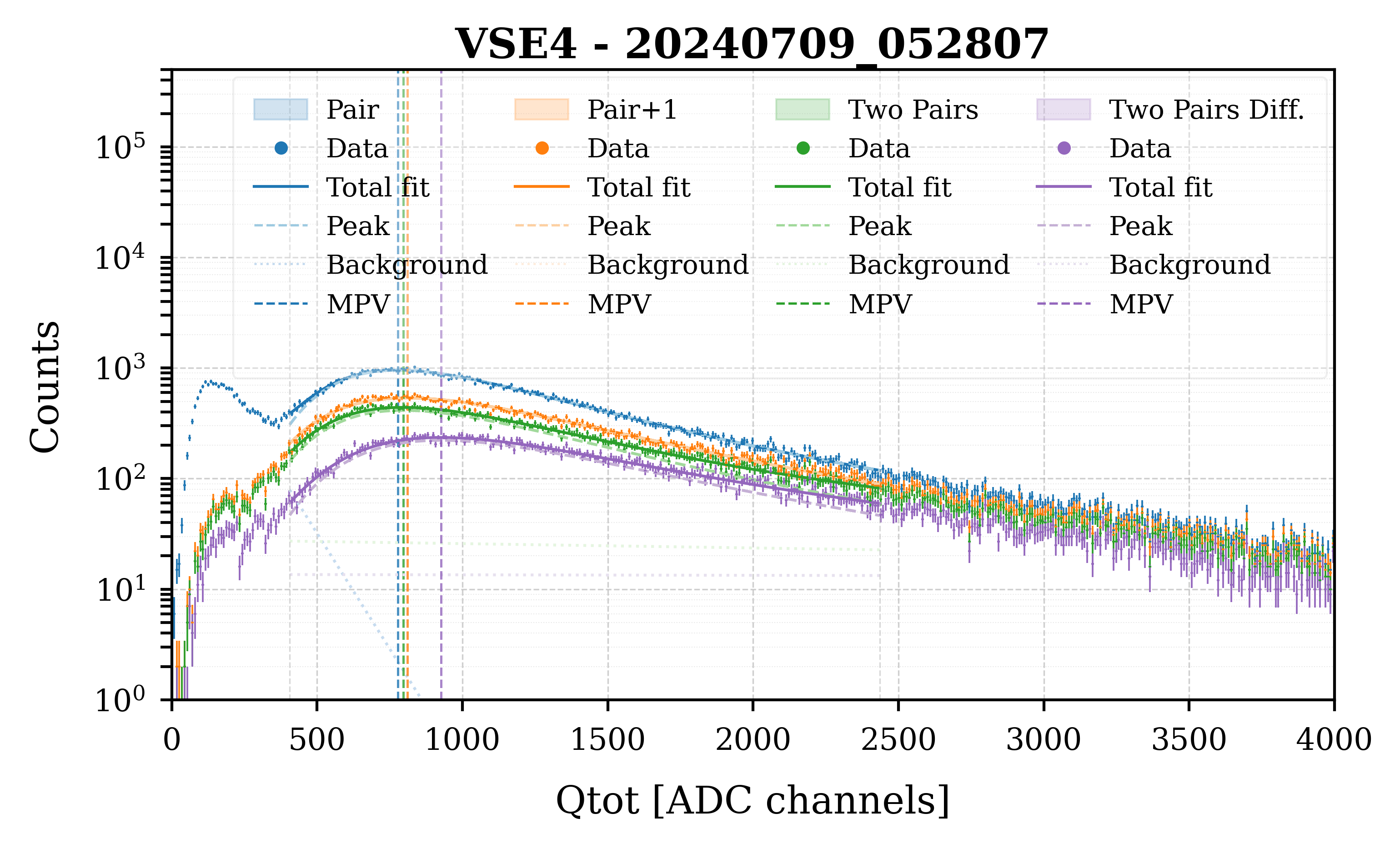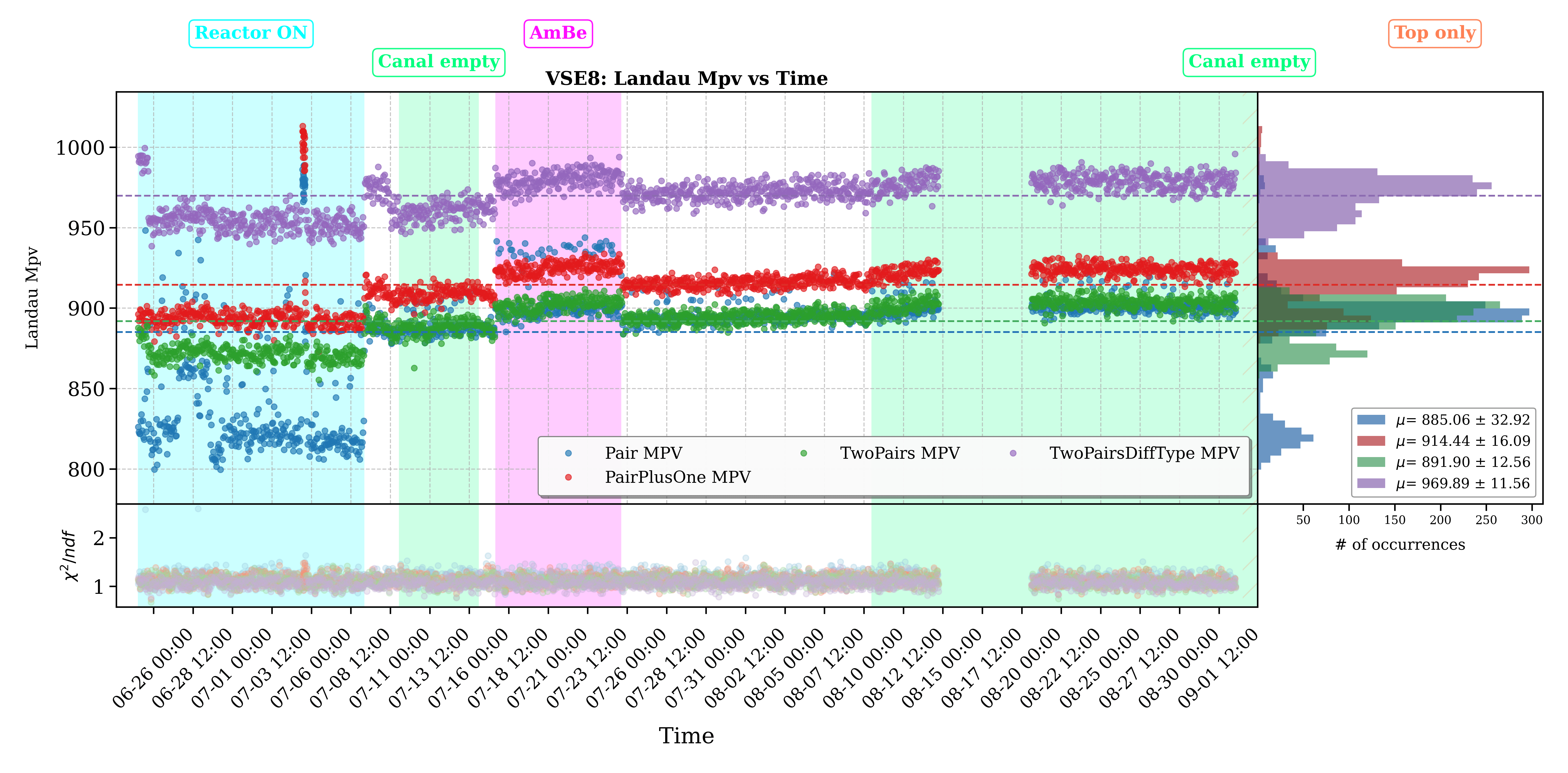Étalonnage en énergie et en efficacité du veto muon de l’expérience RICOCHET à l’ILL
Étalonnage en énergie et en efficacité du veto muon de l'expérience RICOCHET à l'ILL
Calibration and Efficiency Studies of the RICOCHET Muon Veto System
Research Overview
This work was carried out as part of the RICOCHET experiment, which aims to detect coherent elastic neutrino-nucleus scattering (CEνNS) at the ILL research reactor in Grenoble, France. The project focused on the characterization and calibration of the muon veto detectors used to suppress cosmogenic backgrounds. The muon vetos are plastic scintillator panels that surround the cryogenic target and are critical to identifying and rejecting muon-induced events.
Muon Veto System
The veto system is composed of 34 scintillator panels organized into external (E) and internal (I) layers, grouped into top (T), bottom (B), and lateral (L) sections. Each panel is coupled to a photomultiplier tube (PMT) and read out by custom electronics. The expected signal from minimum ionizing particles (MIPs), such as cosmic muons, corresponds to an energy deposition of ~6 MeV for 3 cm thickness.
Calibration and Peak Extraction
The calibration was based on fitting the ADC spectra of each panel to extract the muon peak position. A Landau-Gauss convolution function was used to model the energy loss distribution and electronic response. The average muon peak was expected around ADC channel 400, but significant fluctuations were initially observed between panels and over time.

Temporal Stability and Monitoring
A time-dependent calibration procedure was implemented by performing hourly fits of the muon peak over the full data-taking period. This revealed that some panels exhibited strong calibration drifts, motivating improved selection methods and fit robustness criteria.

Efficiency Estimation and ON/OFF Analysis
Using the calibrated muon peaks, thresholds were set to estimate the detection efficiency of each panel. These efficiencies were then used in the context of ON/OFF analysis to discriminate between reactor-on and reactor-off periods, in order to search for a neutrino signal.
A side-by-side comparison of energy spectra between ON and OFF runs was performed, with fits using a Landau-Gauss convolution to locate the muon peak shifts and assess possible inefficiencies.
.png)
Technical Achievements
Peak Stability
Achieved robust muon peak extraction with Landau-Gauss convolution fitting
Temporal Monitoring
Implemented hourly calibration tracking for 34 detector panels
ON/OFF Analysis
Developed reactor state discrimination for neutrino signal extraction
Background Rejection
Optimized cosmogenic muon identification thresholds
Conclusion and Future Work
This project established a robust framework for muon veto calibration and monitoring at RICOCHET. Future efforts will focus on improving calibration stability, automating peak tracking, and integrating efficiency corrections into the full neutrino analysis chain.
